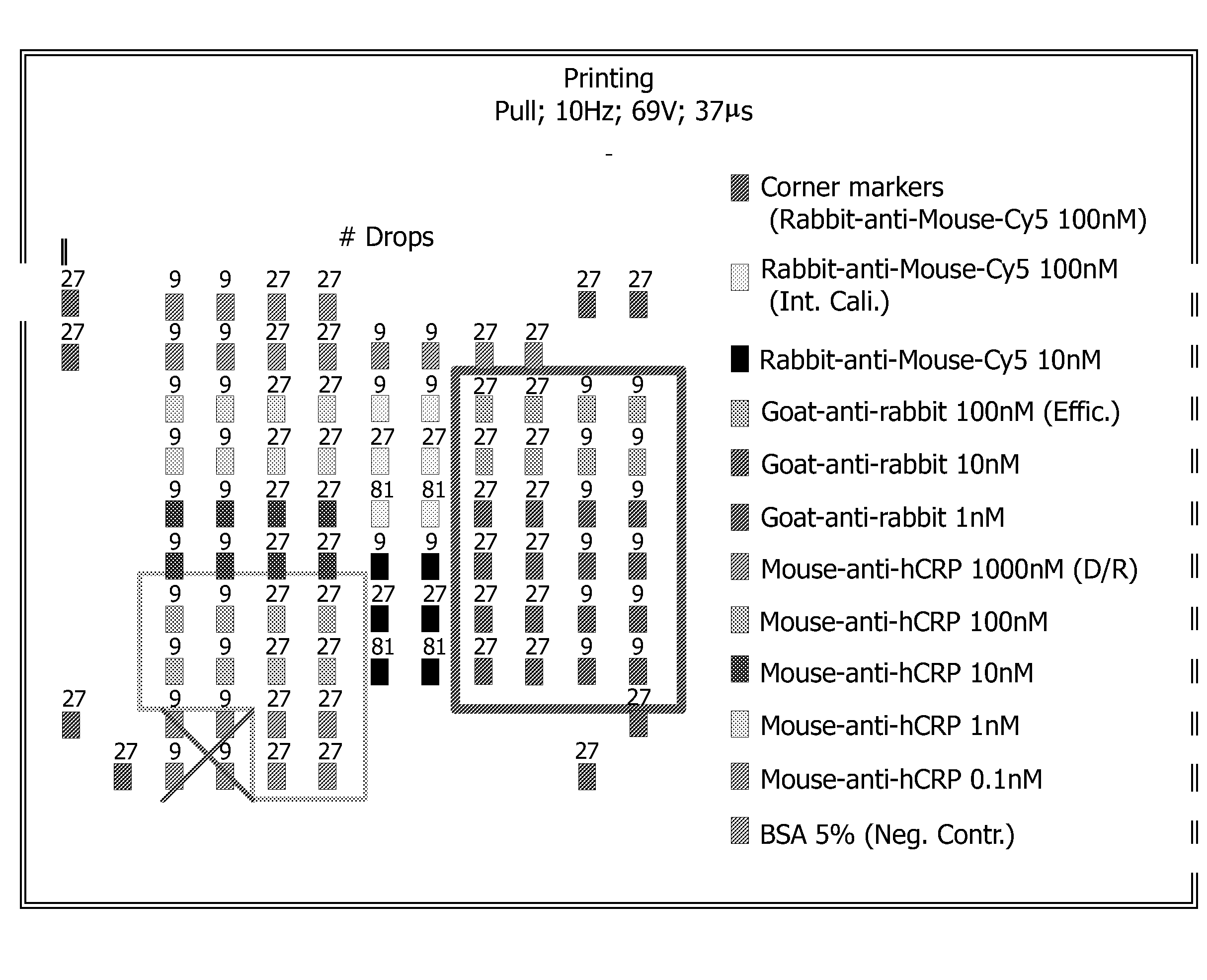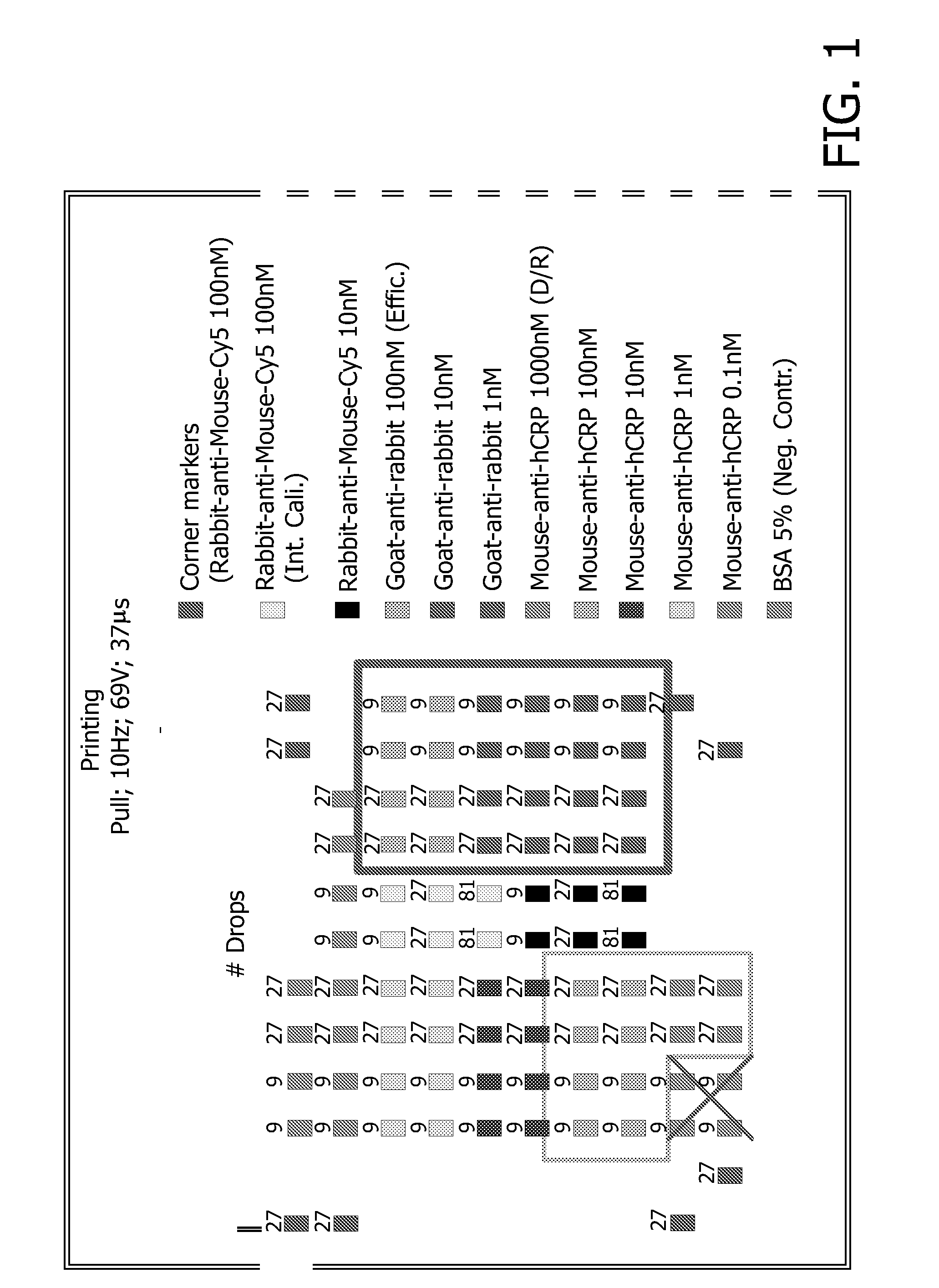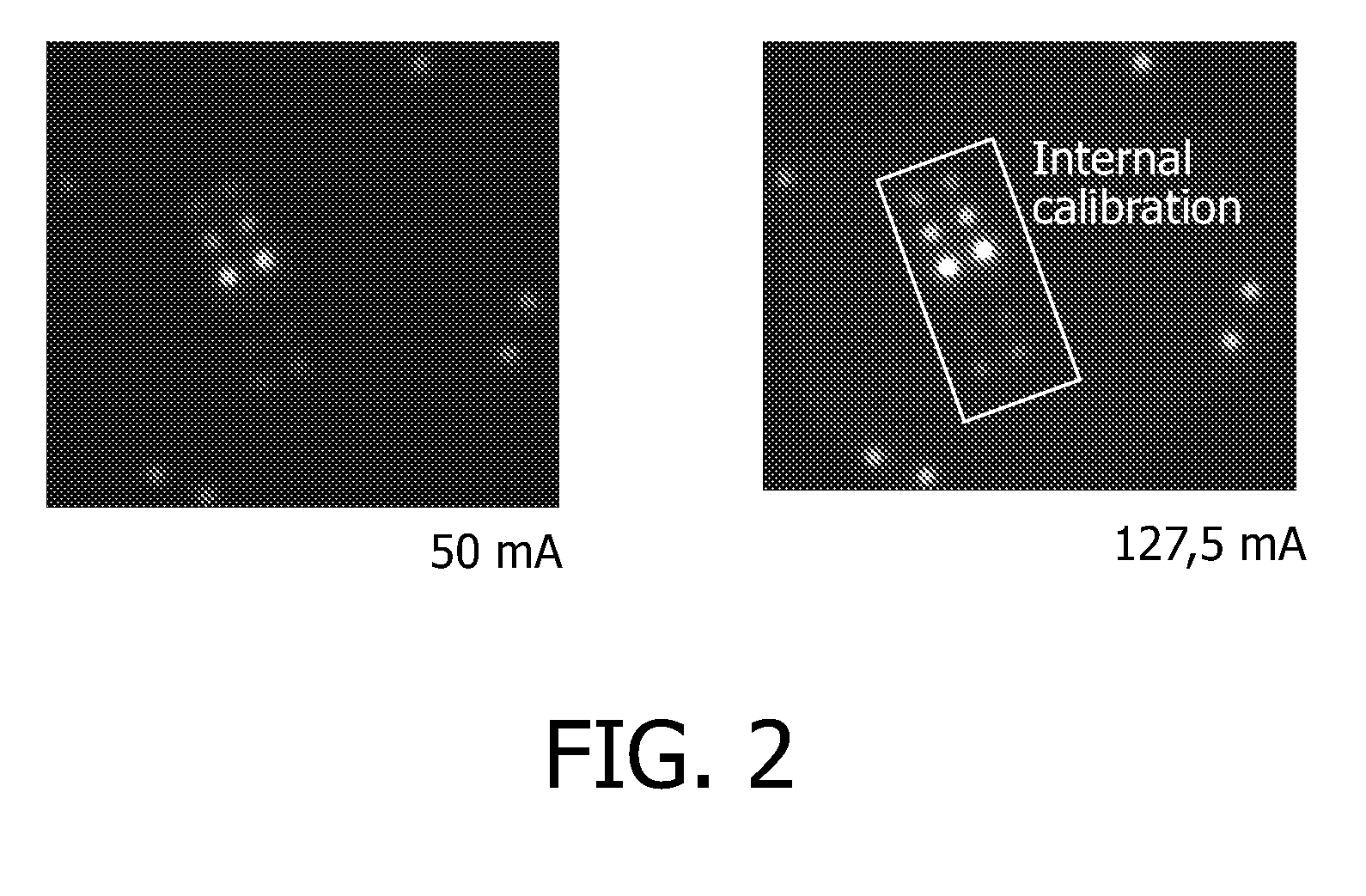Method of determining the concentration of an analyte using analyte sensor molecules coupled to a porous membrane
a technology of analyte sensor and porous membrane, which is applied in the direction of measurement devices, instruments, scientific instruments, etc., can solve the problems of hampered interaction between analyte sensor proteins and analytes, glass cover slides as well as other solid substrates are not ideal for protein immobilization, etc., and achieve the effect of speeding up the inventive method, improving reliability and efficiency
- Summary
- Abstract
- Description
- Claims
- Application Information
AI Technical Summary
Benefits of technology
Problems solved by technology
Method used
Image
Examples
experiment 1
Preparation of a Membrane of Printing Antibodies
[0135]In order to obtain a solid porous support in a micro array format, a nitrocellulose membrane was used. Different antibodies were disposed on this membrane using an ink jet printer.
[0136]In FIG. 1, a schematic picture of the micro array obtained is shown. Antibodies which comprise a fluorescence label such as Cy5 will lead to a fluorescent signal upon suitable excitation regardless of whether an analyte is bound or not. These analyte sensor molecules serve to identify the edges and corners of the micro array and to provide internal standards for calibration of the detection device that is used to measure the resulting fluorescence.
Detecting Analytes on a Micro Array
[0137]In the following, the afore-described micro array was then blocked overnight with 5% by weight BSA, which was protease-free in PBS pH 7.4. Subsequently, the pictures depicted in FIG. 2 were taken. Values of 127.5 mA and 50 mA indicate the images taken at different...
experiment 2
[0141]In this example the influence of repeated cycling of the detectable marker on the signal strength was tested.
Micro Array Print Lay Out
[0142]A micro array print lay out as shown in FIG. 6 was used. The micro array was produced as described above. Cy5 labeled antibodies again represent internal standards.
Experimental Set Up:
[0143]The following capture antibodies (analyte sensor molecules), antigens (analytes) and secondary detection antibodies were used. Streptavidine-labeled Cy5 was used for detection. PBS always refers to PBS pH 7.4. PBST always refers to PBS pH 7.4, 0.0% Tween 20.
NameConc.Article nrCompanyCRP capture antibody 9 mg / ml4C28Hytest Ltd.CRP-9 antigen2.8 mg / ml1707-2004BiotrendCRP detection antibody1.7 mg / ml4C28BHytest Ltd.TNFα capture Ab0.5 mg / ml14-7348-81eBioscienceTNFα human recombinant0.1 mg / ml14-8329-63eBioscienceTNFα detection Ab0.5 mg / ml13-7349-81eBioscience
[0144]The components were used in the following concentrations:
Mouse-Anti-Human CRP
[014...
experiment 3
[0174]In this example the influence of the detectable marker was investigated. Further the effect of pumping was investigated as well as cycling of flow-through through the micro array.
Micro Array Print Lay Out
[0175]A micro array print lay out as shown in FIG. 11 was used. The micro array was produced as described above. Cy5 labeled antibodies again represent internal standards.
Experimental Set Up:
[0176]The following capture antibodies (analyte sensor molecules), antigens (analytes) and secondary detection antibodies were used. Streptavidine-labeled Cy5 was used for detection. PBS always refers to PBS pH 7.4. PBST always refers to PBS pH 7.4, 0.0% Tween 20.
NameConcArticlenrCompanyCRP capture antibody 9 mg / ml4C28Hytest Ltd.CRP-6 antigen2.8 mg / ml1707-2004BiotrendCRP detection antibody1.7 mg / ml4C28BHytest Ltd.TNFα capture Ab0.5 mg / ml14-7348-81eBioscienceTNFα human rec.0.1 mg / ml14-8329-63eBioscienceTNFα detection Ab0.5 mg / ml13-7349-81eBioscienceDonkey-anti-sheep Cy51.5 mg / ml713-175-003...
PUM
 Login to View More
Login to View More Abstract
Description
Claims
Application Information
 Login to View More
Login to View More - R&D
- Intellectual Property
- Life Sciences
- Materials
- Tech Scout
- Unparalleled Data Quality
- Higher Quality Content
- 60% Fewer Hallucinations
Browse by: Latest US Patents, China's latest patents, Technical Efficacy Thesaurus, Application Domain, Technology Topic, Popular Technical Reports.
© 2025 PatSnap. All rights reserved.Legal|Privacy policy|Modern Slavery Act Transparency Statement|Sitemap|About US| Contact US: help@patsnap.com



